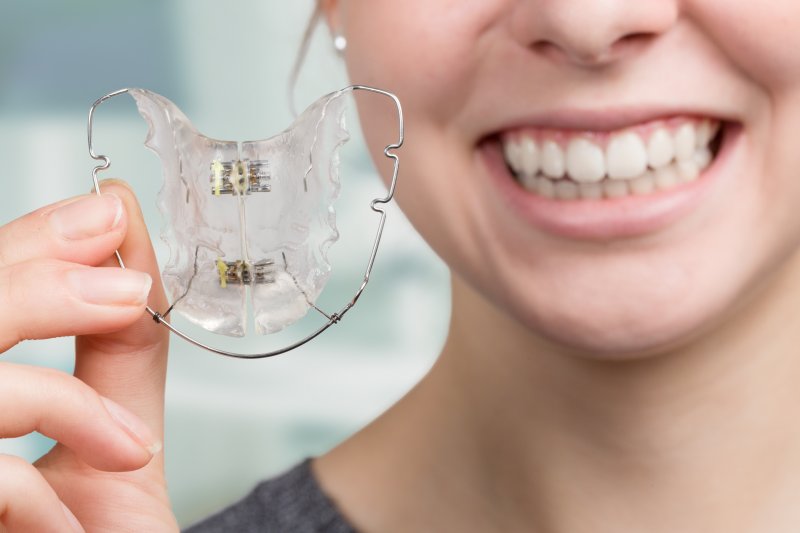Invisalign vs. Typical Dental braces: Which Alternative Is Right for You?
When considering orthodontic therapy, the selection in between Invisalign and traditional braces provides several important variables that warrant careful examination. Invisalign offers a discreet alternative with removable aligners, while typical dental braces offer an extra visible yet efficient service for serious misalignment. Each choice includes distinct advantages and disadvantages associated with aesthetics, convenience, treatment period, and price. Recognizing these subtleties is crucial for making a notified choice that lines up with your individual choices and lifestyle. The concern stays: which alternative will finest fulfill your orthodontic needs and assumptions?
Review of Therapy Options

On the other hand, conventional dental braces include metal brackets and cables that are bound to the teeth. This technique applies continuous pressure in time to attain placement. While effective for complicated orthodontic concerns, standard dental braces need routine gos to for changes and can present obstacles in keeping dental hygiene because of the difficulty of cleaning around cables and brackets.
Both alternatives have their values, and the choice often depends upon particular oral problems, lifestyle preferences, and person conformity. Inevitably, seeking advice from an orthodontic professional is crucial for figuring out one of the most ideal treatment plan tailored to private requirements. Understanding the subtleties of each alternative can significantly influence the total success of orthodontic therapy.
Aesthetic Considerations
A substantial element influencing the choice between Invisalign and traditional braces is the visual allure each therapy provides. Invisalign aligners are crafted from clear plastic, making them virtually unnoticeable when put on.
In contrast, standard dental braces include steel brackets and wires, which can be extra visible. While improvements in orthodontic technology have resulted in the growth of smaller brackets and colored elastics, standard dental braces still maintain an even more obvious profile. For some people, the presence of dental braces might hinder them from seeking essential treatment.
Inevitably, the selection in between Invisalign and traditional dental braces might rest on individual choices regarding visual appeals. Clients that prioritize discretion commonly lean toward Invisalign, while those who are less worried regarding exposure might choose standard braces. Recognizing the aesthetic effects of each alternative is critical for making an educated choice that lines up with one's way of life and choices.
Convenience and Convenience

In terms of benefit, Invisalign aligners are removable, enabling people to appreciate their favored foods without restriction and keep optimum dental health. Cleaning and flossing are simplified, as the aligners can be taken out throughout these routines, whereas typical dental braces call for cautious steering around braces and cords.
In contrast, conventional braces require normal modifications, making them much less practical for those with hectic timetables. In general, the convenience and ease of Invisalign make it an enticing selection for numerous individuals looking for orthodontic treatment.
Treatment Period and Effectiveness
While both Invisalign and conventional dental braces are effective in remedying oral imbalances, the duration of therapy can vary dramatically in between the two options. Normally, Invisalign treatment can take anywhere from 12 to 18 months, depending on the complexity of the situation. The clear aligners function by progressively shifting teeth into their preferred settings, and regular follow-ups with an orthodontist aid make sure development stays on course.
In contrast, standard dental braces often call for a longer dedication, generally varying from 18 months to three years. This is due to their fixed nature and the usage of cords and braces, which can be extra reliable for complicated situations and serious misalignments (Invisalign). The treatment effectiveness of standard braces is well-documented, as they enable accurate changes and higher control look what i found over tooth movement
Inevitably, the choice in between Invisalign and traditional braces may depend upon both the expected treatment period and the particular oral issues handy. Consulting with an orthodontist is critical, as they can give tailored suggestions based upon specific requirements, making sure the selected approach lines up with desired durations and end results.
Expense Comparison and Insurance Policy Options
Cost plays a substantial function in the decision-making procedure for individuals considering orthodontic therapy, whether going with Invisalign or typical braces. Typically, the cost of Invisalign varieties from $3,000 to $8,000, while traditional braces normally set you back between $2,000 and $6,000. Factors affecting these prices include the intricacy of the situation, the period of treatment, and geographical location.
Several oral insurance strategies give partial protection for orthodontic treatments, however the specifics can vary extensively. Typically, traditional dental braces might be extra frequently covered by insurance strategies compared to Invisalign, which some insurance firms classify as a cosmetic treatment.
Furthermore, several orthodontic methods use flexible repayment plans, making both therapy options extra available. Patients should ask about prospective financing alternatives and discounts for in advance settlements. Assessing the complete expense, consisting of insurance advantages and settlement plans, is important for making a notified decision that straightens with both visual choices and spending plan considerations.

Conclusion
In summary, the selection in between Invisalign and typical dental braces pivots on multiple elements, consisting of aesthetic preferences, comfort, treatment period, weblink and cost. Invisalign uses a discreet, detachable choice that facilitates dental health and nutritional adaptability, while standard braces might be better for complex dental issues and frequently come at a reduced rate factor. Eventually, assessment with an orthodontist is vital to examine private situations and determine the most ideal therapy choice for achieving optimum dental alignment.
When taking into consideration orthodontic treatment, the option between Invisalign and typical braces provides a number of crucial aspects that warrant cautious examination.Contrasting Invisalign and standard dental braces discloses unique therapy choices for orthodontic adjustment.While both Invisalign and conventional braces are reliable in dealing with oral misalignments, the duration of therapy can vary significantly between the two alternatives.Cost plays a substantial duty in the decision-making process for individuals considering orthodontic treatment, whether opting for Invisalign or conventional dental braces.In recap, the choice in between Invisalign and conventional dental braces pivots on several factors, consisting of visual preferences, convenience, therapy duration, and cost.